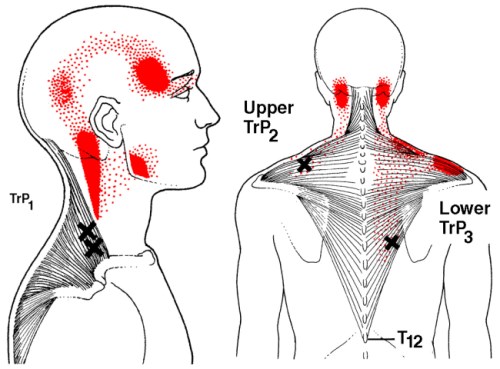Did you know that your “knots” can cause pain in different parts of the body than where they are located? Crazy right!? It’s something I see quite frequently in the clinic, and can be quite a strange sensation when you put two and two together.
So the technical term for knots is Trigger Points. These trigger points can form due to repetitive movement, overloading a muscle, or poor posture and are a bundle of very tiny muscle fibres that are in a shortened, or contracted state. These trigger points, while also being the cause of localised muscle pain, can each have what we call a Referral Pain Pattern. This means that a particular trigger point, if activated or angry enough, can be shooting off pain to a different area.
This can happen anywhere in the body, but the common ones I see can include trigger points;
- In the shoulders or neck referring into your head, causing a headache
- In the pectoralis muscles, referring out to the shoulder
- In the rotator cuff muscles, referring into the arm
- In the muscles of the hip, referring down the leg, into the side of the leg or into the lower back
Well, how do we treat these trigger points?
There are a couple of ways we can do this.
- Trigger Point Therapy.
This involves putting pressure on the trigger point, stimulating it to release.
- Dry Needling
This involves placing a very thin needle straight into the trigger point. You may feel a twitch, which then relaxes the trigger point.
In the meantime, you can also use heat packs, a tens machine, or deep heat cream to help manage the discomfort!
It is quite a strange, but rewarding feeling when you are treating a particular trigger point, and the client says “That’s it! That’s the headache I’ve been getting”
If you are experiencing any aches, pains or headaches, you can book an appointment online, or feel free to get in touch with kailee@backontrackremedial.com.au


